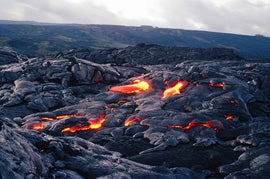Extinct Supervolcano Discovered In Italy

With seven “supervolcanoes” identified world-wide, all with the potential to go off, this might just be one of the most important scientific discoveries of late. James Quick lead the study in the Italian Alps’ Sesia Valley, where they explored the 8-mile-wide caldera of the now extinct volcano that last erupted 280 million years ago.
What makes this volcano so darn important is that when Africa and Europe collided 30 million years ago, the earths crust twisted, which caused this volcano’s inner workings to go nearly horizontal. This twist is now giving Quick and the research team from SMU an unprecedented view into the inner workings of a supervolcano.
The goal of this research is to use the information collected in Italy to predict when the the next supervolcano will go off. Handy stuff when you consider that one of the seven supervolcanos resides in our beloved Yellowstone National Park. (see When Will Yellowstone Explode?) Researchers from the study describe the eruption of the volcano in Italy as lasting for weeks. Complete with volcanic ash, earthquakes, and rivers of lava (oh my!). The eruption even blocked out the sun, lowering global temperatures for decades, possibly even centuries.
Pretty grim stuff if you think about it—good thing those SMU researchers are trying to figure it out. Here’s to early warning systems, and hoping none of those crazy “Armageddon” or “The Core” Hollywood scenarios pan out.
If it does, I sure hope the lead scientists involved can pronounce “nuclear.”
–Jordan Olmsted
Geology (Magmatic Plubming Of A Large Permian Caldera Exposed To A Depth Of 25km)
SMU